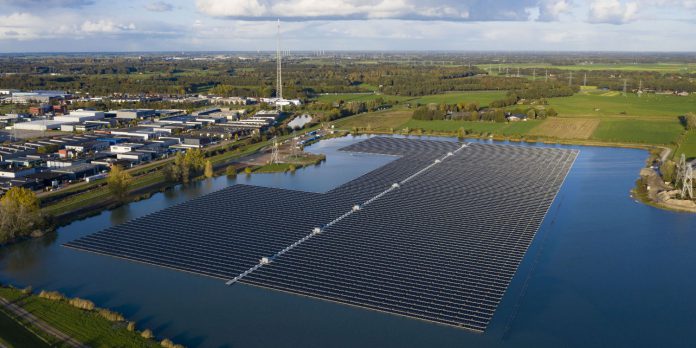A study undertaken by the Fraunhofer Institute for Solar Energy Systems (ISE) for renewable energy developer Baywa re, has calculated lignite open-cast ponds in Germany could host 56 GW of floating PV project generation capacity.
“After deducting the estimated areas relevant for leisure activities, tourism, nature and landscape conservation, there remains an economic potential of 2.74 GW,” the researchers added.
The researchers found almost 500 open-pit lakes with a total area of more than 47,000ha in Germany, most of them in the eastern states of Brandenburg, Saxony-Anhalt and Saxony. Some 4.9% of those water surfaces would be suitable for floating photovoltaic projects, according to the research institute, with the greatest potential reportedly lying in the Lausitz lignite mining region.
The researchers pointed out open-cast lignite mines make up just under 13% of the 4,474 artificial bodies of water in Germany.
Incentives
To develop floating PV technology and reduce investment costs, Fraunhofer ISE said additional incentives for the technology, similar to those granted by the Dutch government, would be necessary.
At present, all German PV projects with a generation capacity of more than 750 kW compete in public tenders, a system which tips the odds against floating facilities, which can be 10-15% more expensive than ground-mounted alternatives. “It would, therefore, make sense to have ‘innovation tenders’ specifically for floating PV and other innovative photovoltaic power plants that still need a market boost,” the Fraunhofer report stated.
Harry Wirth, head of photovoltaic modules and power plants at Fraunhofer ISE, said: “In order to avoid time-consuming changes to the land use plan, the land-neutral floating PV technology should be privileged, as is already the case today for the use of land for wind and nuclear power.” Wirth added, open-cast mines should be recognized as conversion areas under the German renewable energy law.
Water solution
It has been estimated Germany will require a ninefold increase in its installed PV generation capacity, to around 500 GW, to complete its transition to a zero-carbon energy system.
“Floating PV power plants are a relatively new concept for the use of photovoltaics but for which there is a great potential for electricity generation worldwide, not least because they allow a [land] neutral expansion,” said Fraunhofer ISE director Andreas Bett. The area utilization coefficient for floating photovoltaics is very high, at around 1.33 MW of generation capacity per hectare installed.
The cooling effect of the water also ensures the yield of floating PV systems may be higher than with comparable ground-mounted facilities.






